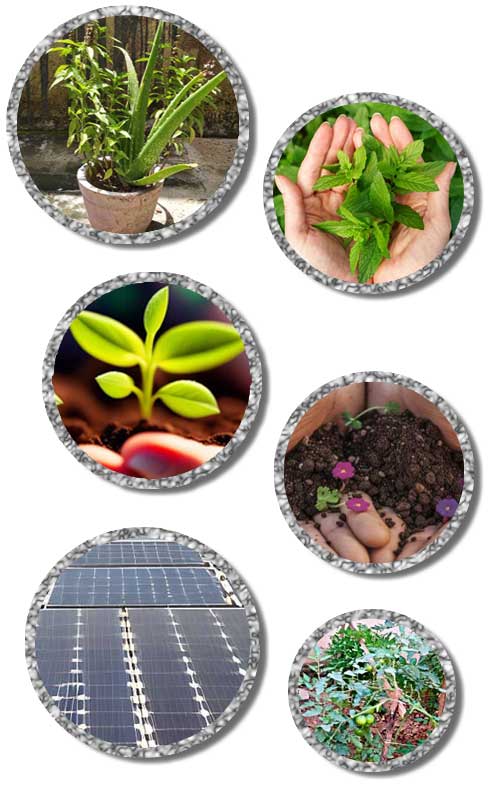Minimalism is not just about decluttering your home or owning fewer things; it’s a mindset that encourages conscious consumption and sustainable living. Adopting a minimalist lifestyle can significantly reduce our environmental impact while improving our quality of life.
In today’s fast-paced world, consumerism has led to excessive waste, pollution, and depletion of natural resources. Every product we buy has an environmental cost—materials, energy, transportation, and eventual disposal. This is where minimalism comes in.
How Minimalism Benefits the Environment
Reduces Waste and Pollution
The more we consume, the more waste we generate. From plastic packaging to electronic waste, our throwaway culture is overwhelming landfills and oceans. By embracing minimalism:
- We buy only what we need, reducing excess packaging waste.
- We choose durable, reusable products over single-use items.
- We donate, recycle, or repurpose items instead of throwing them away.
For example, switching from disposable plastic bottles to a reusable water bottle can prevent thousands of plastic bottles from entering landfills over a lifetime.
Lowers Carbon Footprint
Every product has a carbon footprint—from manufacturing and transportation to disposal. Minimalism reduces this footprint by:
- Encouraging quality over quantity (buying fewer but better products).
- Reducing demand for mass production cuts down factory emissions.
- Supporting local and sustainable brands instead of fast fashion or mass-produced goods.
For instance, a minimalist wardrobe with versatile, ethically made clothing significantly reduces textile waste and the pollution caused by the fashion industry.
Conserves Natural Resources
Minimalism helps preserve Earth’s natural resources, such as water, trees, and minerals, by:
- Reducing the demand for unnecessary products that require raw materials.
- Promoting second-hand shopping saves resources needed for new production.
- Encouraging digital alternatives to paper, reducing deforestation.
For example, the production of just one cotton t-shirt requires about 2,700 liters of water—enough for a person to drink for nearly three years. By choosing quality clothing and reducing frequent purchases, we help conserve these precious resources.
Promotes Sustainable Living Practices
Minimalists tend to adopt habits that align with environmental sustainability, such as:
- Decluttering responsibly by donating or recycling items instead of sending them to landfills.
- Using fewer appliances and gadgets saves electricity and reduces electronic waste.
- Opting for a minimalist diet by eating locally sourced, plant-based foods, reducing food waste, and lowering the carbon impact of meat production.
For example, eating a plant-based diet even a few days a week significantly cuts down water usage and greenhouse gas emissions.
Encourages a Simple and Green Lifestyle
Minimalism naturally leads to eco-friendly habits, including:
- Living in smaller, energy-efficient homes that require fewer resources to build and maintain.
- Choosing sustainable transportation such as walking, cycling, or using public transport instead of driving.
- Being mindful of energy consumption by using fewer electronic devices and turning off unnecessary lights.
A great example is bike rentals, like the feature planned for Nature Wale, which promotes eco-friendly travel by reducing dependence on fuel-powered vehicles.
How to Adopt a Minimalist and Sustainable Lifestyle
Here are a few practical steps to start living minimally while benefiting the environment:
- Declutter Responsibly – Donate, recycle or repurpose items instead of throwing them away.
- Buy Less, Choose Better – Invest in durable, high-quality, and eco-friendly products.
- Embrace Second-Hand Shopping – Opt for thrift stores, upcycled furniture, or refurbished electronics.
- Reduce Energy Use – Use LED bulbs, unplug devices when not in use, and opt for energy-efficient appliances.
- Adopt a Minimalist Diet – Reduce food waste, support local farmers, and eat more plant-based meals.
- Limit Plastic Use – Carry a reusable water bottle, bag, and container.
- Choose Sustainable Transport – Walk, bike, or use public transport instead of driving whenever possible.
Final Thoughts
Minimalism is more than just an aesthetic choice; it’s a powerful way to live sustainably. By consuming less, choosing wisely, and embracing simplicity, we can help protect our planet for future generations. Small changes, when multiplied, create a significant impact.
At Nature Wale, we believe that a minimalist approach to life can lead to a healthier, greener world. Are you ready to take the first step toward sustainable minimalism? Share your journey with us and inspire others to make a change!








